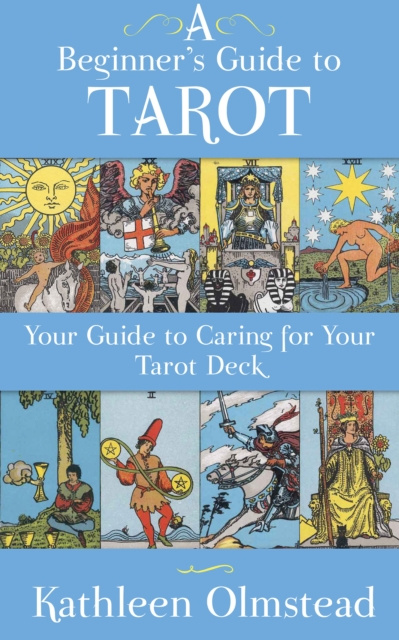Embarking on a new journey with a tarot deck can be an invigorating experience. Whether you are drawn to the mystical imagery or the profound insights these cards can provide, getting started can seem daunting. Here’s a comprehensive guide designed especially for the novice tarot enthusiast, helping you navigate through the essential steps to become adept at using your new tarot deck.
1. Choosing Your Tarot Deck
The first step in your tarot journey is selecting the right deck. There are myriad options available, each with its unique aesthetic and interpretive style. Popular decks like the Rider-Waite-Smith are often recommended for beginners due to their symbolic richness and widely accessible imagery. However, you might be drawn to more modern or thematic decks, such as the Wild Unknown or the Everyday Witch Tarot. Don’t shy away from exploring different styles; your connection with the artwork is paramount.
2. The Importance of Intention
Before you begin to shuffle your cards, establish your intention. What do you hope to gain from this experience? Be it clarity on a specific situation, understanding your personal growth, or merely exploring your intuition, setting a clear intention will help focus your readings. Consider journaling about your goals; this will serve as a motivational tool as you progress.
3. Understanding the Basics
Familiarize yourself with the structure of your tarot deck. A standard deck comprises 78 cards, divided into the Major Arcana and Minor Arcana. The Major Arcana features 22 cards representing significant life events, while the Minor Arcana consists of 56 cards that delve into everyday situations. Each card carries distinct meanings, so take time to invoke each card’s essence. Use resources like guidebooks or online databases to gather initial insights on the cards.
4. Creating a Sacred Space
Establishing a conducive environment is crucial for effective readings. Designate a specific location for your tarot practice, be it a quiet corner in your bedroom or a cozy spot in your living room. Surround yourself with items that resonate with your intention, such as crystals, candles, or incense. The atmosphere should be calming and personal, inviting introspection and communion with your cards.
5. Cleansing Your Deck
Before diving into readings, it is essential to cleanse your new tarot deck. This practice purges any residual energy from the manufacturing process or past owners. Methods include using sage, sound cleansing with a bell, or simply meditating on your cards with the intention of clearing their energies. Consider your choice of method thoughtfully, as it contributes to the bond you will share with your deck.
6. Learning Card Meanings
Diving deep into the meanings of your tarot cards is pivotal. Start with the upright meanings and gradually explore the reversed interpretations. Flashcards are an effective study tool; create them for each card with its primary meanings to facilitate memorization. Alternatively, utilize apps that can provide daily card interpretations. Consistent interaction with the cards will foster familiarity and intuition.
7. Practicing Simple Spreads
Once you feel comfortable with the individual card meanings, begin practicing with simple spreads. One of the most popular beginner spreads is the three-card spread, which typically represents the past, present, and future. Another engaging option is the single-card pull, where you draw a card to guide you through the day. Regardless of the spread, pay attention to the card placements and their relationship to one another. This intricate interplay can reveal layers of meaning within your reading.
8. Engaging in Daily Practice
Developing a daily tarot practice can enhance your skills significantly. Allocate time each day to draw a card, contemplate its meaning, and apply its wisdom to your life. Regular practice not only sharpens your interpretation skills but also deepens your intuition. Integrate your readings into a broader mindfulness routine, journaling your experiences and reflections.
9. Trusting Your Intuition
As you traverse your tarot journey, remember that your intuition is a powerful ally. While the traditional meanings provide a foundation, your personal interpretations breathe life into each reading. Allow yourself to feel the vibrations of the cards and narrate a story based on your unique insights. The more you trust your instincts, the more authentic your readings will become.
10. Connecting with the Tarot Community
Engage with the burgeoning tarot community. Social platforms like Instagram and TikTok burst with content creators sharing their interpretations, experiences, and tips. Joining online forums or local groups can also provide encouragement and a sense of belonging. Sharing your journey with like-minded individuals enhances learning and sparks inspiration, fostering deeper connections with both your craft and your fellow enthusiasts.
11. Reflecting on Your Journey
As you immerse yourself in your tarot practice, make time for reflection. After each reading, contemplate the insights and feelings that emerged. What resonates with you? What feels challenging? Documenting your thoughts allows you to track your evolution and helps clarify your intentions moving forward. Embrace this journey as both a learning experience and a means of personal growth.
Getting started with a new tarot deck is indeed a captivating endeavor. By following these steps, you not only enhance your understanding of the cards but also cultivate a profound connection to your intuitive self. Tarot is not merely about predicting the future; it is about engaging with the present enrichingly and purposefully. Embrace your journey, trust the process, and open yourself up to the myriad possibilities that await.

